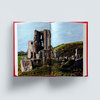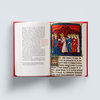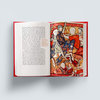New, Quality Books - 50-90% off, over 2500 titles
Your basket is empty.
Categories Last Chance to buy! IN THE REIGN OF KING JOHN
Categories History HISTORY OF THE CLASSICAL WORLD
Categories Crime PIRATES AND PRIVATEERS IN THE 18TH CENTURY
Categories Transport SHIP OF DREAMS: The Sinking of the Titanic
Categories History UNEARTHING THE FAMILY OF ALEXANDER THE GREAT
Categories Transport VIOLENCE OF EMPIRE: The Tragedy of the Congo-Ocean Railroad
Categories History WAR & TRADE WITH THE PHARAOHS
Categories History FIGURING OUT THE PAST: A History of The World
Categories History HOW TO TEACH CLASSICS TO YOUR DOG
Categories Crime REGICIDE: The Trials of Henry Marten
IN THE REIGN OF KING JOHN
Book number: 94167
Product format: Hardback
In stock
£9.00
Customers who bought this product also bought
|
|
|
|
|
|
|
|
Browse these categories as well: Last Chance to buy!, History
HISTORY OF THE CLASSICAL WORLD
Book number: 93622
Product format: Paperback
In stock
£7.00
Customers who bought this product also bought
|
|
|
|
|
|
|
|
Browse this category: History
PIRATES AND PRIVATEERS IN THE 18TH CENTURY
Book number: 93624
Product format: Hardback
In stock
£9.00
Customers who bought this product also bought
|
|
|
|
|
|
|
|
Browse these categories as well: Crime, History
SHIP OF DREAMS: The Sinking of the Titanic
Book number: 93626
Product format: Hardback
In stock
£12.00
Customers who bought this product also bought
|
|
|
|
|
|
|
|
Browse these categories as well: Transport, History
UNEARTHING THE FAMILY OF ALEXANDER THE GREAT
Book number: 93629
Product format: Hardback
In stock
£14.00
Customers who bought this product also bought
|
|
|
|
|
|
|
|
Browse this category: History
VIOLENCE OF EMPIRE: The Tragedy of the Congo-Ocean Railroad
Book number: 93630
Product format: Hardback
In stock
£7.00
Customers who bought this product also bought
|
|
|
|
|
|
|
|
Browse these categories as well: Transport, History
WAR & TRADE WITH THE PHARAOHS
Book number: 93631
Product format: Hardback
In stock
£9.50
Customers who bought this product also bought
|
|
|
|
|
|
|
|
Browse these categories as well: History, Business & Computers
FIGURING OUT THE PAST: A History of The World
Book number: 94204
Product format: Paperback
In stock
£5.00
Customers who bought this product also bought
|
|
|
|
|
|
|
|
Browse this category: History
HOW TO TEACH CLASSICS TO YOUR DOG
Book number: 94239
Product format: Paperback
In stock
£4.00
Customers who bought this product also bought
|
|
|
|
|
|
|
|
Browse this category: History
REGICIDE: The Trials of Henry Marten
Book number: 94245
Product format: Hardback
In stock
£8.00
Customers who bought this product also bought
|
|
|
|
|
|
|
|
Browse these categories as well: Crime, Historical Biography, History















































































